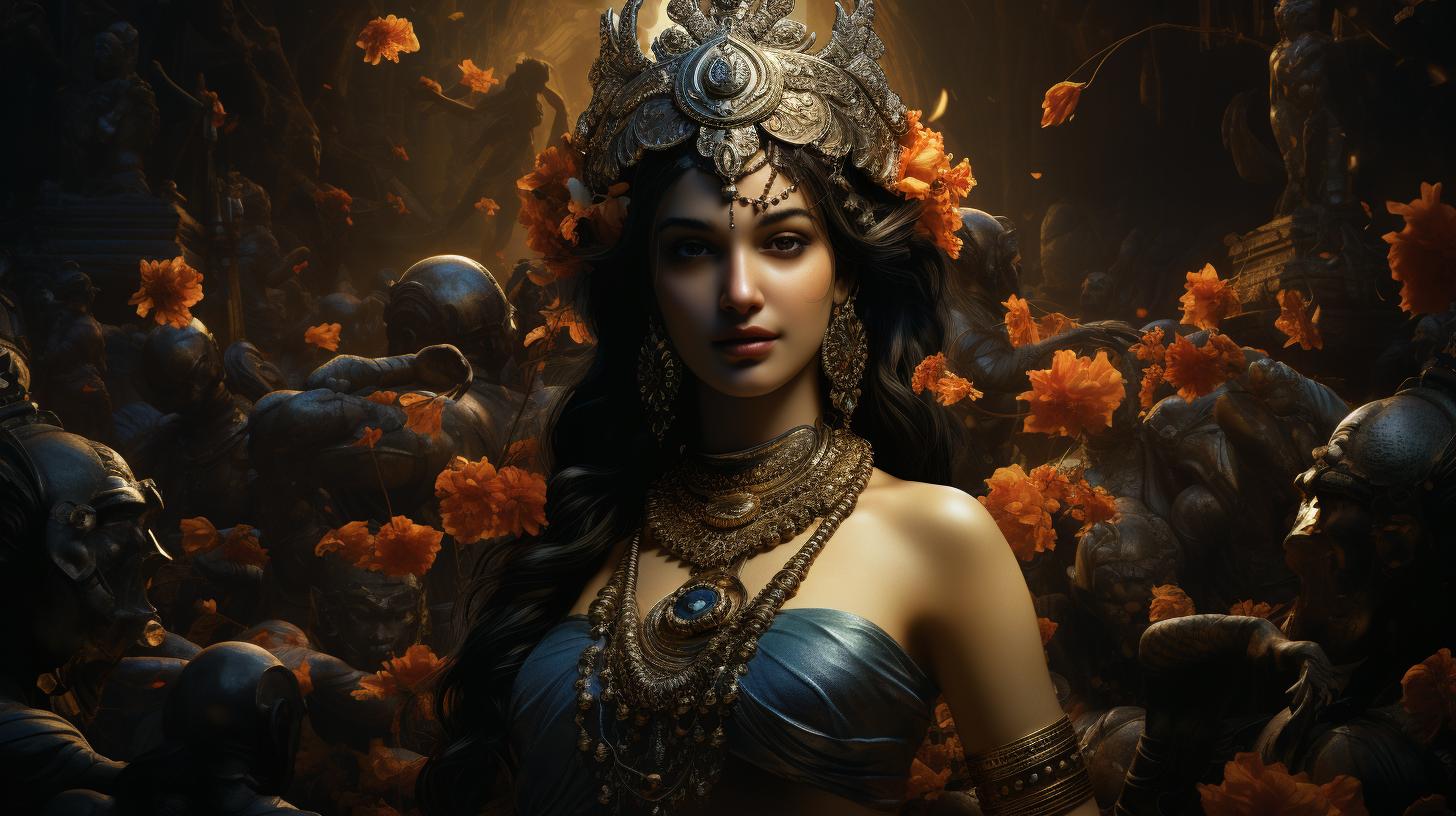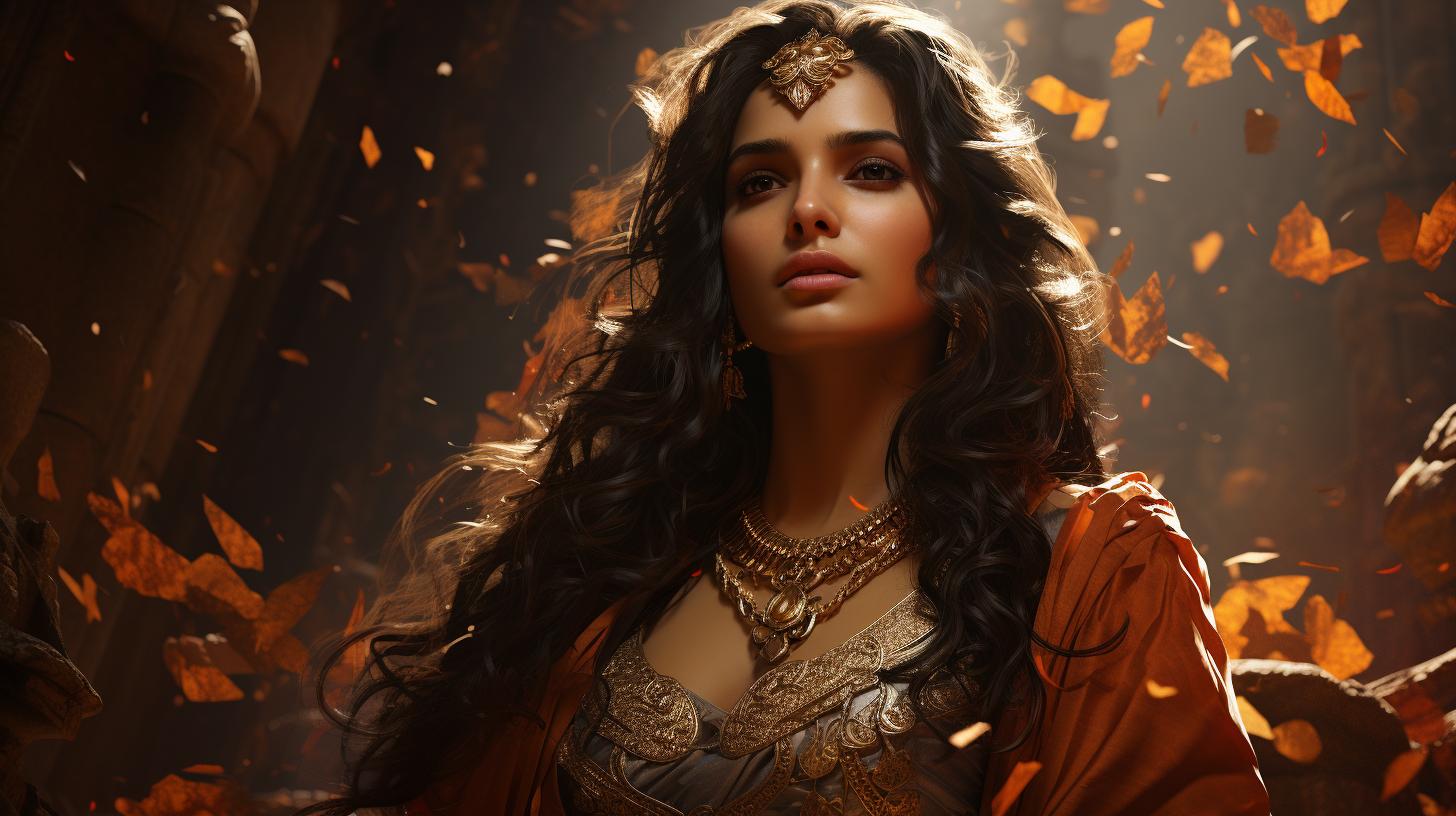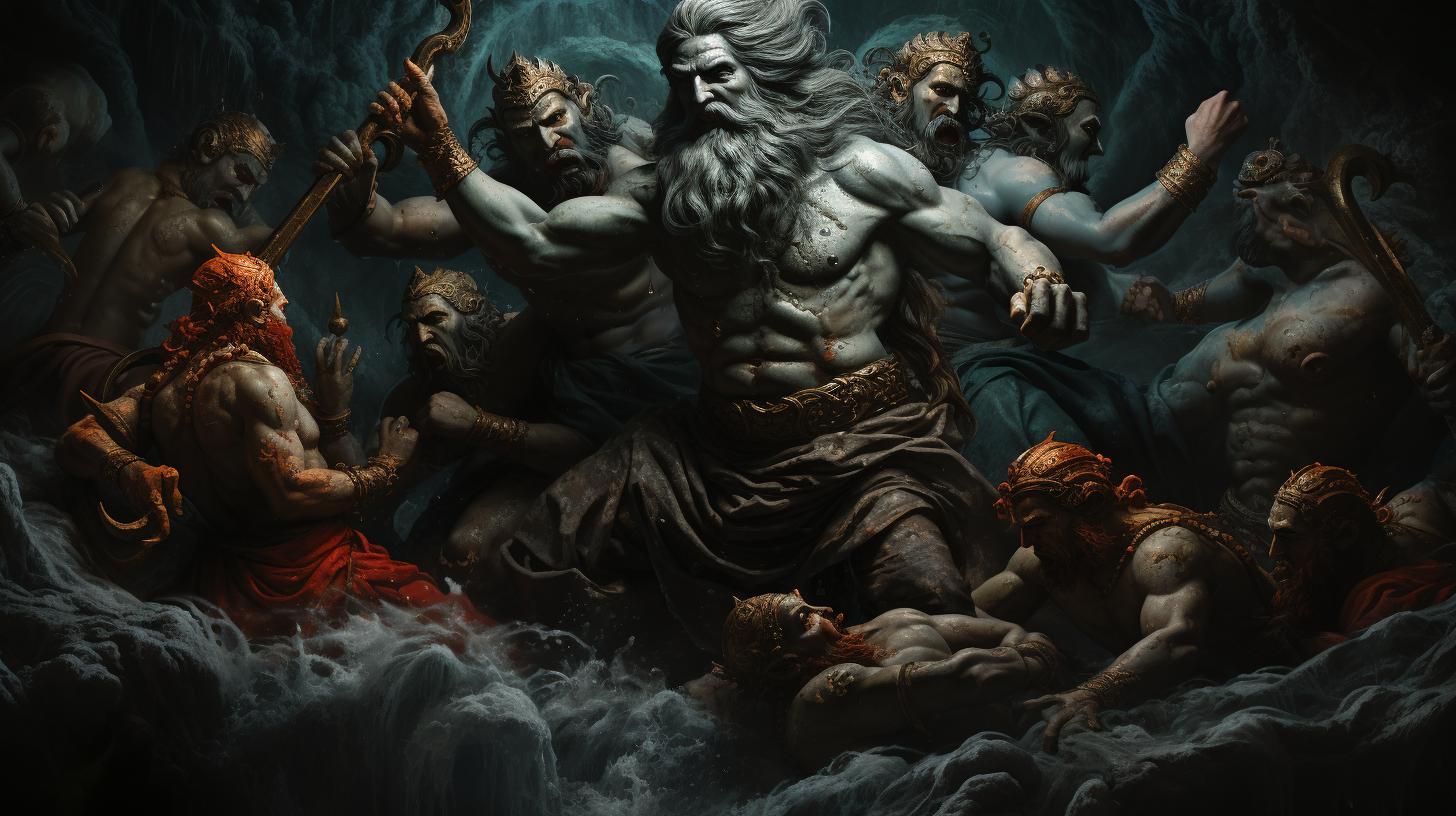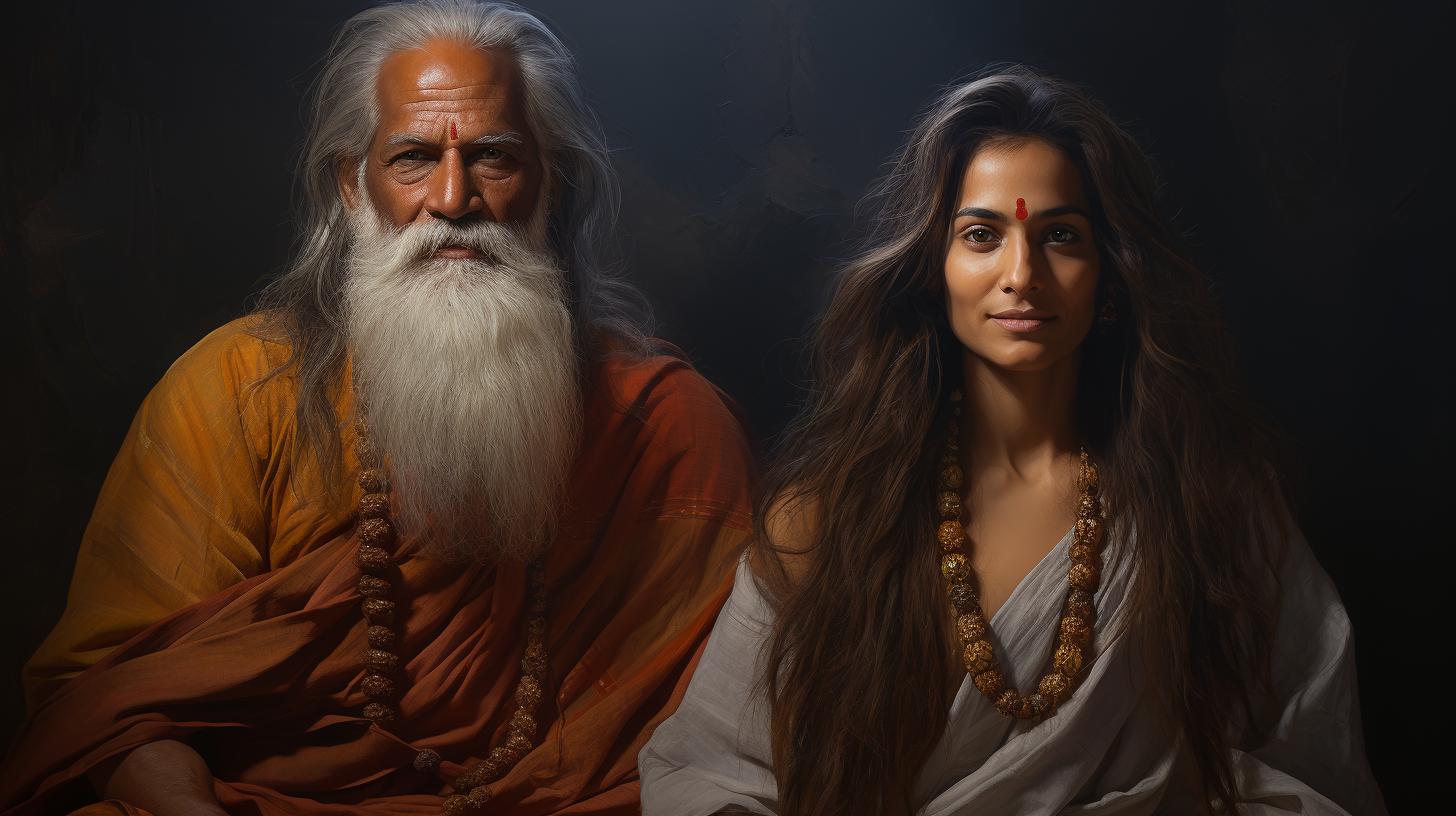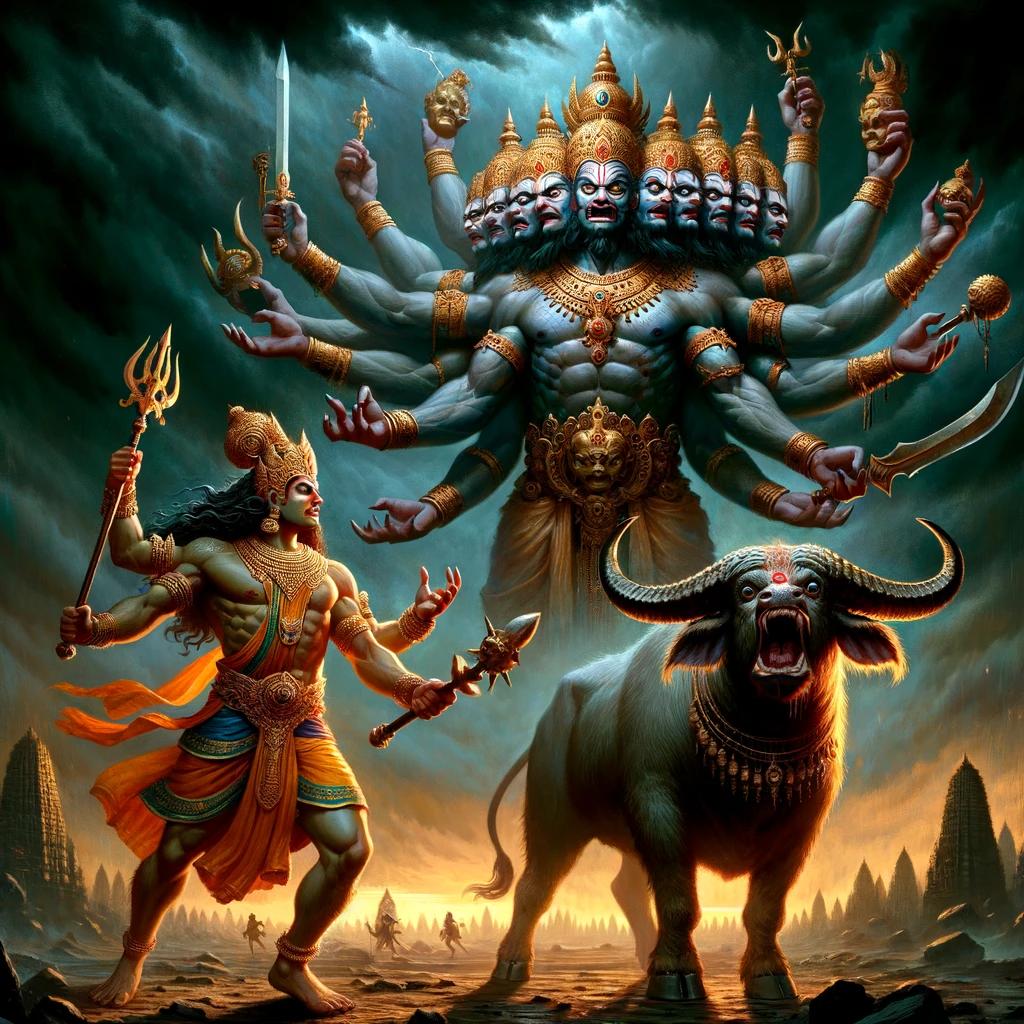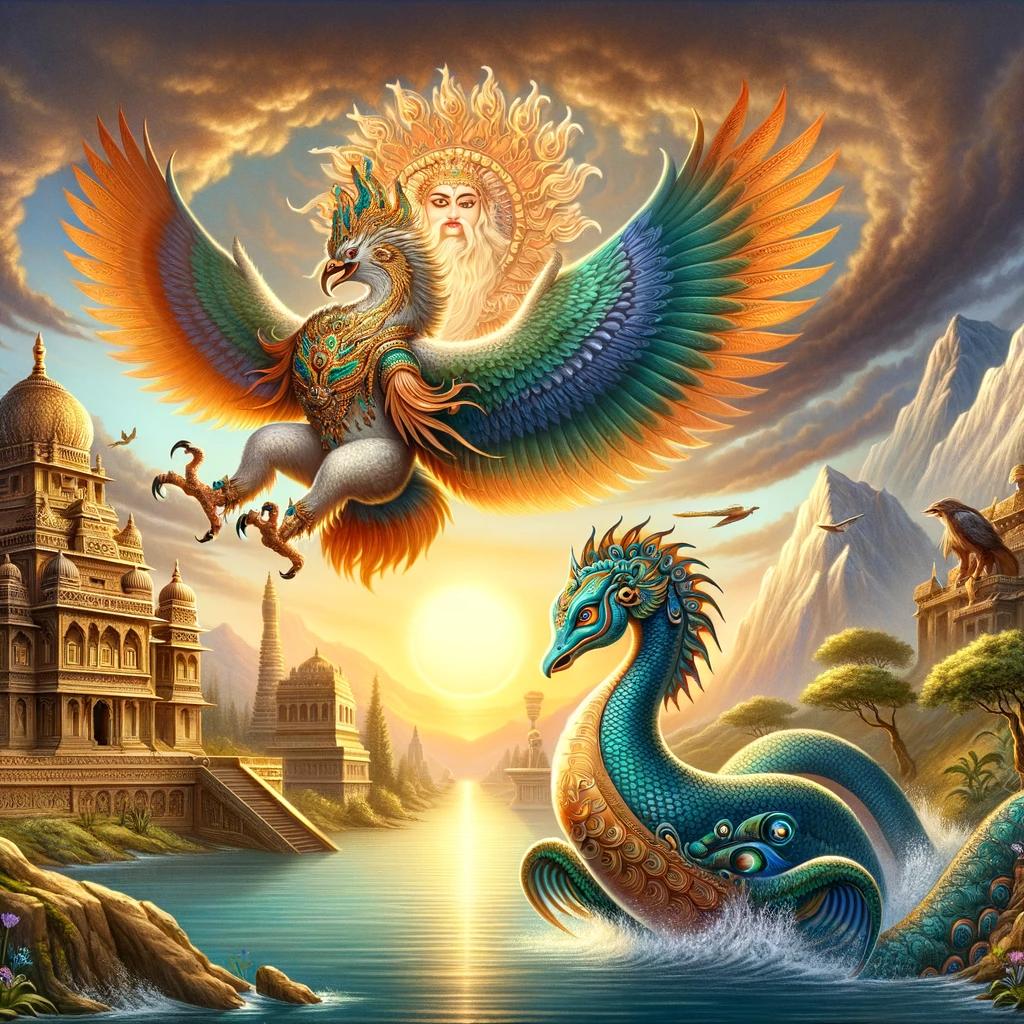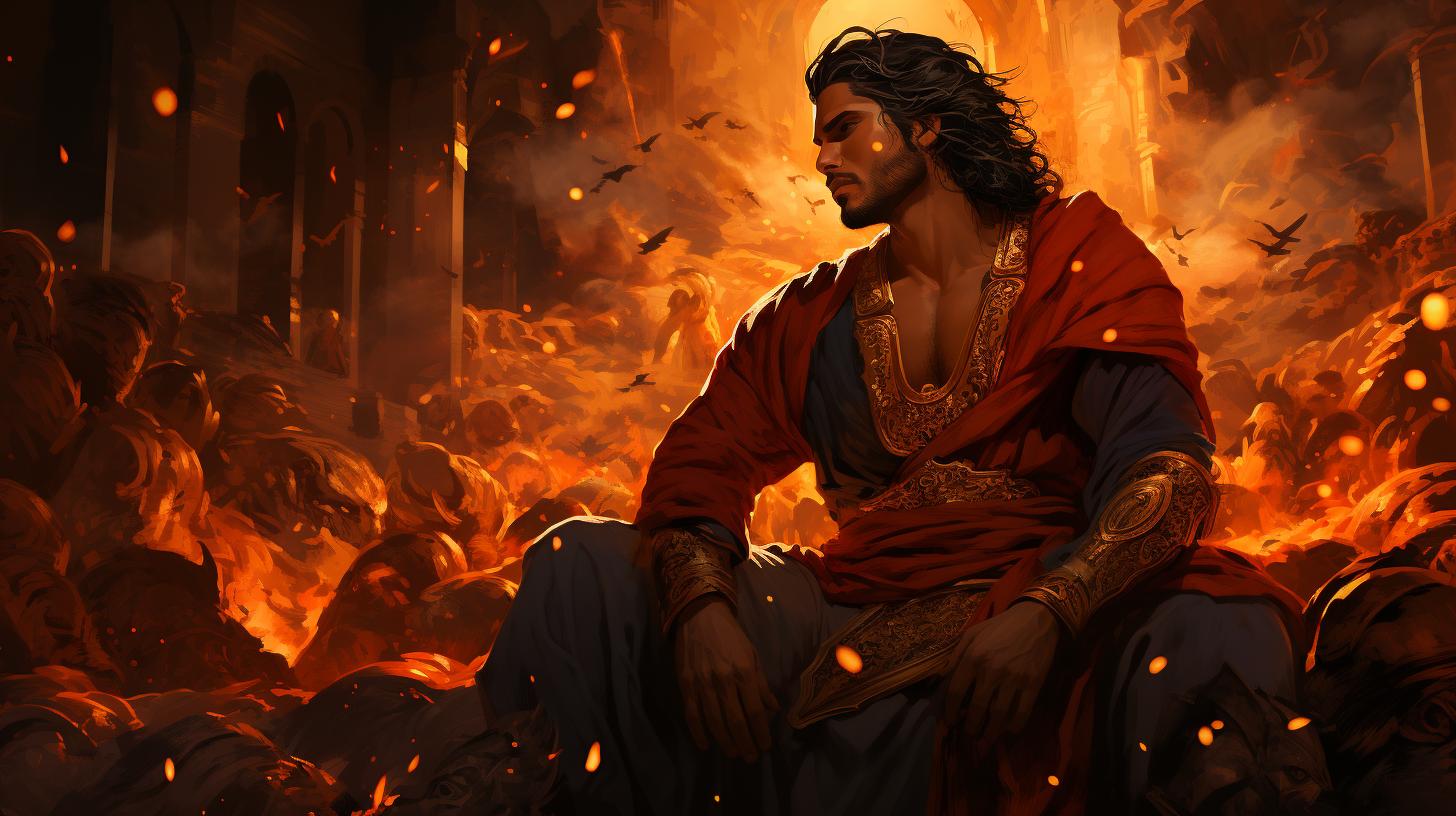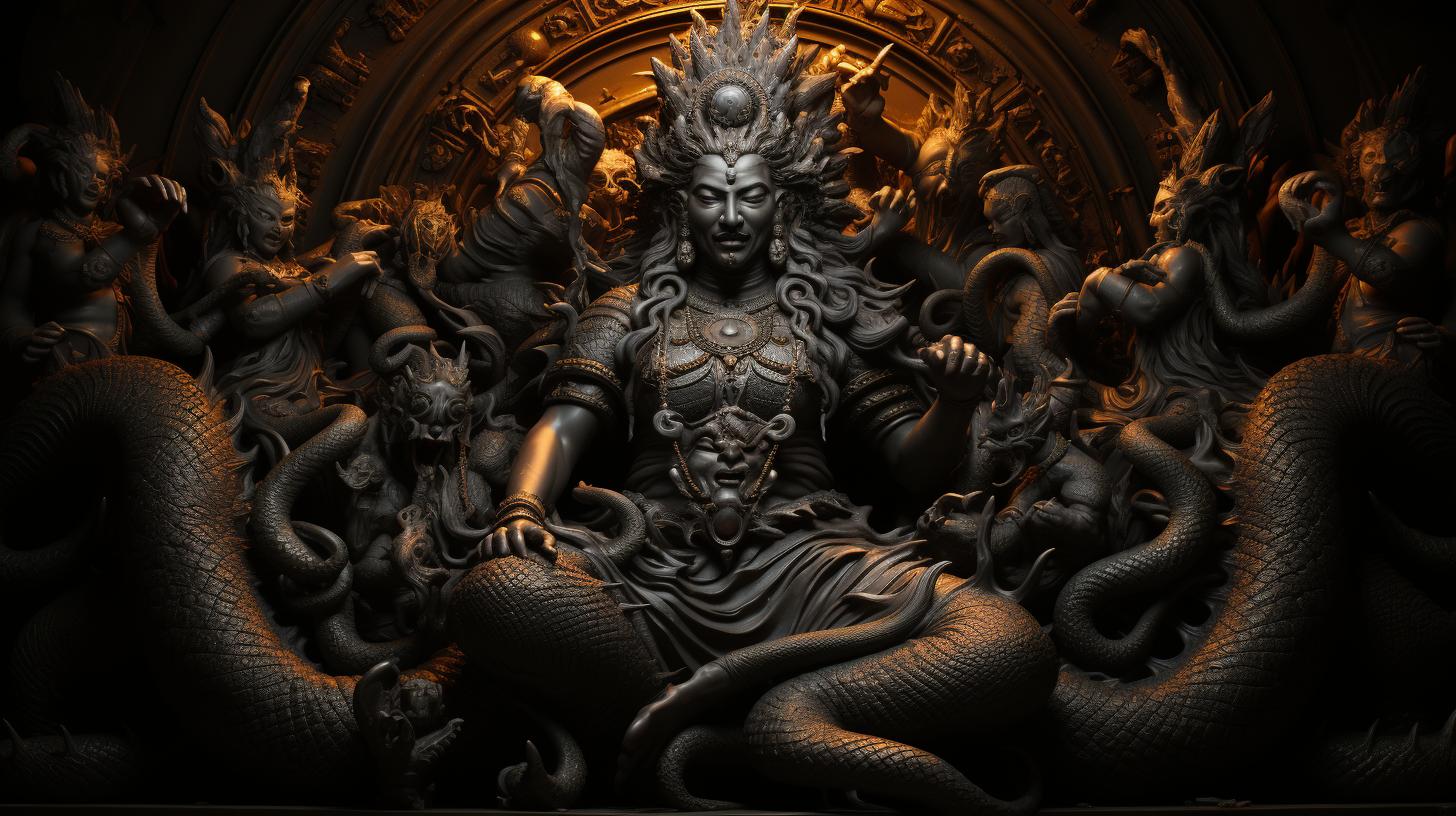Unveiling the Enchanting Urvashi Apsara Story: A Captivating Journey into Hindu Mythology
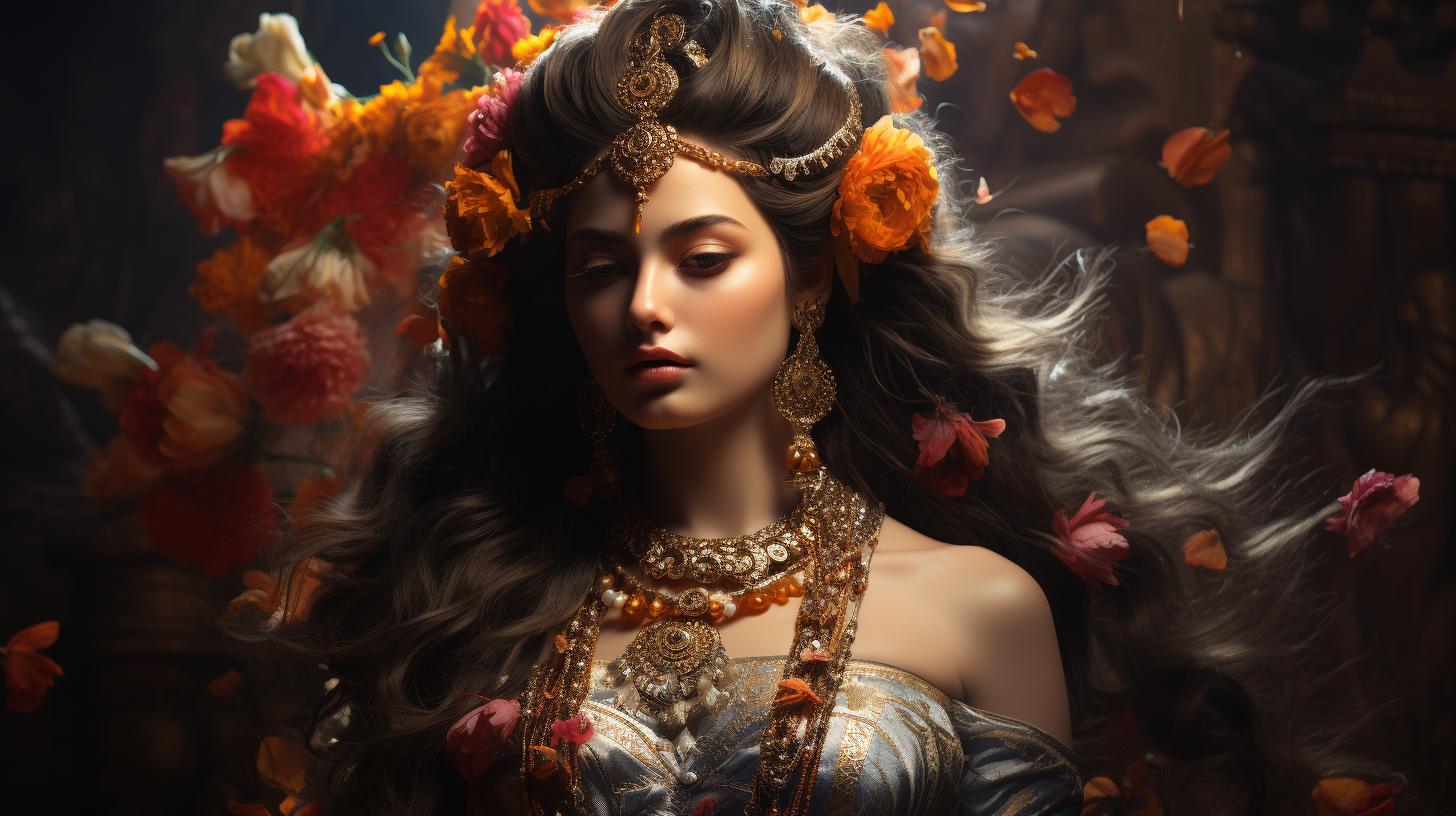
The Urvashi Apsara story holds great significance in Hindu mythology. It is a tale that intertwines the lives of Indra, the King of the Gods, and Urvashi, the celestial nymph.
Indra’s role in the divine order and his defeat of the evil asura Vritra are central to the story. Urvashi, known for her stunning beauty and dance skills, emerges as a prominent figure in Indra’s court.
Together, their story explores themes of love, loss, and redemption. This article delves into the captivating world of Urvashi Apsara, shedding light on the various aspects of their mythological journey.
Overview of Urvashi Apsara in Hindu Mythology
In Hindu mythology, the Urvashi Apsara holds a significant place.
Urvashi is a celestial nymph known for her exquisite beauty and enchanting dance skills. She is prominently featured in various mythological tales that revolve around love, devotion, and the divine. The legends surrounding Urvashi and her connection with Indra, the King of the Gods, depict her as a central figure in the celestial court of Svarga.
Urvashi’s origin story is intriguing. According to ancient texts, she emerged from the thigh of the sage Narayana and was bestowed with mesmerizing charm and grace. As a result, she captured the attention and admiration of Indra, who invited her to join his court in Svarga, the heavenly realm.
Urvashi’s presence in Svarga elevated the grandeur and artistic essence of the celestial abode.
Urvashi’s association with Indra further deepened when she became an inspiration for divine artists and musicians. Her ethereal beauty, elegance, and mesmerizing movements enchanted both gods and mortals alike.
The stories of her divine dances and her role in sparking creativity continue to fascinate people even today.
As we delve into the captivating world of Urvashi Apsara, we encounter tales of love, separation, and redemption. Her intricate relationship with figures like Pururavas, the first king of the legendary Chandravamsha dynasty, adds depth and complexity to her mythological journey.
Urvashi’s stories explore the depths of human emotions, showcasing the power of love and the trials one must endure to reunite with their beloved.
The Story of Indra: King of the Gods
Indra, the mighty King of the Gods, plays a prominent role in Hindu mythology. He is revered as the leader of the devas, the divine beings, and the ruler of Svarga, the celestial realm.
Often compared to deities like Jupiter, Zeus, and Thor, Indra possesses divine powers associated with weather, thunder, storms, rain, rivers, and warfare.
In the Rigveda, the oldest Vedic text in Hindu tradition, Indra is mentioned more frequently than any other deity.
His significance lies in his role in maintaining cosmic order and his triumph over the wicked asura Vritra. This victory symbolically represents the defeat of deceitful forces, leading to the arrival of rains and sunshine, which bring salvation to humanity.
Although Indra’s prominence diminishes in post-Vedic literature, he continues to be a significant character in various mythological events. His fame extends beyond Hinduism and spreads to Buddhism and Jainism, playing significant roles in their respective mythologies as well.
Iconographically, Indra is portrayed wielding a weapon called Vajra and riding a white elephant named Airavata. His abode is Amaravati, the capital city of Svarga, which is associated with Mount Meru, believed to be the cosmic center in Hindu mythology.
The etymological origin of Indra’s name remains a subject of debate among scholars, with multiple proposed theories but no definitive consensus. It has been suggested that it could mean “drop of rain,” “equipped with great power,” “kindle,” or “sight.”
Urvashi: The Celestial Nymph in Hindu Mythology
In Hindu mythology, Urvashi is renowned as a celestial nymph, captivating with her timeless beauty and exceptional dancing skills. She holds a significant place in the divine realm, particularly in the court of Indra, the King of the Gods.
Urvashi’s ethereal presence and grace have fascinated countless beings throughout the ages.
According to ancient texts, Urvashi emerged from the thigh of the great sage Narayana and became an enchanting figure in Svarga, the heavenly abode. Her origin and celestial nature set her apart, endowing her with an irresistible charm that both mortals and deities found impossible to resist.
Urvashi’s association with Indra further adds to her importance in Hindu mythology. As a prominent member of Indra’s court, she symbolizes beauty, artistic expression, and the pleasures of life.
Her presence in Svarga brings joy and fascination to the celestial realm, while her allure captures the hearts of those who encounter her.
While Urvashi’s role as a celestial nymph is central to the stories of Hindu mythology, she also plays a crucial part in the birth of two revered sages, Vasishtha and Agastya.
The legends tell of how Urvashi’s divine beauty mesmerized the gods Varuna and Mitra, leading to the birth of these eminent sages. This connection further strengthens her significance in the intricate tapestry of Hindu mythology.
Urvashi’s tale transcends time and continues to inspire artists, writers, and performers. Her story serves as a reminder of the captivating power of beauty, and the fleeting nature of desire.
It explores themes of love, longing, and the challenges that arise when mortal and immortal worlds intertwine.
In Hindu art and literature, Urvashi’s depiction varies, but her elegance and allure remain constant. Artists portray her in various forms, capturing her grace through dance and her ethereal charm in their creations.
Her presence in different artistic mediums attests to the enduring influence of Urvashi’s character in the realm of creativity.
As we delve deeper into the profound world of Hindu mythology, Urvashi’s celestial essence continues to captivate our imaginations. Her tale reflects the eternal human quest for beauty, love, and the pursuit of the extraordinary.
It is through mythical figures like Urvashi that we can explore the depths of our own desires, dreams, and aspirations.
The Birth of Urvashi and Her Association with Indra
Urvashi, the enchanting celestial nymph, holds a captivating story of her birth and association with the divine Indra. According to the religious texts, Urvashi emerged from the thigh of the sage Narayana, acquiring a significant place in Indra’s celestial court in Svarga.
Her birth is intertwined with divine occurrences, as she symbolizes grace, beauty, and eternal youth. As a celestial being, Urvashi possesses unparalleled allure and charm, captivating not only the mortal realm but also the gods themselves.
Her association with Indra, the king of gods, lends her a prominent role in the divine hierarchy.
Urvashi’s presence in Indra’s court adds to the splendor and allure of Svarga, the heavenly realm.
Her ethereal beauty, mesmerizing dance performances, and enchanting aura make her a cherished figure among the gods and a subject of admiration for all. Urvashi’s association with Indra signifies her elevated status and serves as a source of inspiration for artists, poets, and performers depicting her story.
- Urvashi’s birth from the thigh of the sage Narayana
- Her significant position in Indra’s celestial court
- Symbolizing grace, beauty, and eternal youth
- Her ethereal allure captivating both mortals and deities
- An integral part of Svarga’s splendor and allure
- Her mesmerizing dance performances and enchanting aura
- Inspiring artists, poets, and performers depicting her story
Urvashi’s birth and association with Indra set the stage for her remarkable journey that unfolds in subsequent events, showcasing her captivating presence and mythological significance within Hindu culture.
Urvashi’s Role in the Creation of Sage Vasishtha and Agastya
In Hindu mythology, Urvashi, the celestial nymph, plays a significant role in the creation of two revered sages – Vasishtha and Agastya. According to the legend, Urvashi’s association with these sages originates from a unique incident involving the gods Varuna and Mitra.
It is said that Varuna and Mitra became enamored by Urvashi’s extraordinary beauty and grace. Upon witnessing her, they involuntarily released their seed into a jar. This event led to the birth of two illustrious sages, Vasishtha and Agastya, who are revered for their wisdom and spiritual prowess.
Vasishtha, known for his unwavering devotion and deep spirituality, played a crucial role in the ancient Indian scriptures, including the Rigveda. He was a revered sage, counselor to kings, and guardian of spiritual knowledge.
Vasishtha’s wisdom and teachings were highly regarded and sought after.
Agastya, on the other hand, was known for his vast knowledge of herbs, medicines, and his ability to control natural elements.
He was considered the father of Tamil literature and contributed significantly to the development of the Tamil language and culture. Agastya’s deep spiritual insights and contributions to various fields made him a revered figure in Indian mythology.
Urvashi’s unintentional role in the creation of these revered sages showcases the interconnectedness of various divine beings in Hindu mythology. It symbolizes the profound influence that even celestial beings like Urvashi can have on the course of human history and spiritual evolution.
The Legend of Urvashi and Pururavas: A Tale of Love and Separation
In the captivating story of Urvashi and Pururavas, we witness a tale that embodies the power and complexities of love. Urvashi, the celestial nymph, and Pururavas, the first king of the legendary Chandravamsha dynasty, find themselves entangled in a relationship fraught with challenges and heartache.
Their journey begins when Urvashi, known for her unmatched beauty and exceptional talent as a dancer, captures Pururavas’ heart. Their love blossoms, and they enjoy four blissful years together. However, their happiness is short-lived as celestial beings intervene, tearing them apart.
Urvashi is called back to her celestial abode, leaving Pururavas devastated.
Driven by his deep love for Urvashi, Pururavas embarks on a relentless quest to reunite with her. He travels through treacherous terrains, braves formidable obstacles, and confronts mythical creatures in his unwavering pursuit.
The intensity of his love fuels his determination, compelling him to overcome every challenge that crosses his path.
Urvashi, too, yearns for Pururavas, but fate and the divine realm test their commitment.
As they navigate through the realms of gods and mortals, their love is challenged by various trials and tribulations. Each time they come close to being reunited, new obstacles emerge, tearing them apart once again.
The tale of Urvashi and Pururavas serves as a poignant reminder of the power and resilience of true love. It explores the depths to which individuals are willing to go to be with their beloved, enduring countless trials in their unwavering pursuit of happiness.
Through their story, we gain insights into the universal themes of love, separation, and the enduring human spirit. It is a reminder that love transcends barriers and can conquer even the most formidable challenges.
Symbolism and Themes in the Urvashi Apsara Story
In the Urvashi Apsara story, there are several powerful symbols and overarching themes that add depth and meaning to the narrative. These symbols and themes reflect the cultural and philosophical beliefs of Hindu mythology.
Let’s explore some of the key symbolism and themes present in the story:
Divine Love and Devotion
The story of Urvashi and Pururavas showcases the power of divine love and devotion. Their deep affection for each other transcends all obstacles, reminding us of the transformative nature of true love.
Beauty and Seduction
Urvashi, being a celestial nymph known for her unparalleled beauty, represents the allure and seductive nature present in the world. Her enchanting presence captivates not only mortal men but also the gods, symbolizing the transient nature of physical beauty.
Sacrifice and Redemption
The separation between Urvashi and Pururavas highlights the concept of sacrifice and redemption. In their journey, both characters face trials and tribulations, ultimately demonstrating the transformative power of sacrifice and the potential for redemption.
Illusion and Deception
Throughout the story, there are instances of illusion and deception. These elements emphasize the impermanent nature of worldly desires and serve as a reminder that true fulfillment lies beyond material pursuits.
Rebirth and Reunion
The Urvashi Apsara story also incorporates the themes of rebirth and reunion. The characters undergo personal transformation, symbolizing the cyclical nature of life and the potential for reunion and reconciliation in different forms.
Power of Destiny
There is a strong belief in the power of destiny depicted in the Urvashi Apsara story. The events unfold as per the divine plan, highlighting the idea that each individual has a predetermined path and purpose in life.
- Divine Love and Devotion
- Beauty and Seduction
- Sacrifice and Redemption
- Illusion and Deception
- Rebirth and Reunion
- Power of Destiny
Overall, the symbolism and themes in the Urvashi Apsara story offer profound insights into the nature of love, the transient aspects of beauty, the power of sacrifice, the role of illusion, the cyclical cycle of life, and the influence of destiny.
These elements make the story not only engaging but also provoke contemplation about the human experience and our place in the cosmic order.
Urvashi Apsara in Hindu Art and Literature
The captivating story of Urvashi Apsara has left a significant imprint on various forms of art and literature in Hindu culture. Artists and writers have been inspired by her beauty, grace, and the timeless themes depicted in her tale.
Depictions in Art
Urvashi has been a favorite subject in Hindu art for centuries. Paintings and sculptures portray her as a radiant celestial nymph, adorned with exquisite jewelry and garments that highlight her ethereal beauty.
Artists skillfully capture her elegance and charm through intricate details and vibrant colors.
One of the most iconic representations of Urvashi is her classical dance pose, capturing her grace and skills as a dancer.
This depiction symbolizes her connection to arts, music, and performance, making her a beloved figure in the artistic realm.
Literary Influence
The Urvashi Apsara story has also found its place in Hindu literature, serving as an inspiration for poets, playwrights, and authors. Her tale of love, separation, and reunion has been narrated in various poetic works, epic stories, and dramatic performances.
Authors have explored the complexities of Urvashi’s character, delving into themes of desire, sacrifice, and the consequences of divine-human relationships. Her story serves as a powerful metaphor for human emotions and the eternal longing for love.
Symbolic Significance
In addition to her aesthetic portrayal, Urvashi holds symbolic significance in Hindu art and literature. She represents beauty, desire, and passion, and embodies the idea of divine femininity. Her celestial nature reflects the celestial realm and the allure of the mystical world.
Furthermore, Urvashi’s journey reflects the universal human experience of love, loss, and redemption. Her story serves as a reminder that love transcends boundaries and tests the limits of human determination and devotion.
The representation of Urvashi in Hindu art and literature continues to captivate audiences, evoking a sense of wonder and admiration for her timeless beauty and enduring story.
Influence of Urvashi Apsara in Contemporary Culture
Urvashi Apsara, with her enchanting beauty and captivating story, has lef her mark on various aspects of contemporary culture.
Her timeless tale and significance in Hindu mythology have inspired numerous forms of artistic expression, literature, and even popular culture.
Literature and Performing Arts
The story of Urvashi Apsara has been a popular theme in literature, both in traditional and modern works. Writers and poets have drawn inspiration from her tale to create stories that explore themes of love, devotion, and redemption.
Urvashi’s character has also found its way into plays and theatrical productions, where her graceful dance moves and ethereal presence are showcased.
Visual Arts
The visual representation of Urvashi Apsara has been a subject of fascination for artists across generations. Paintings, sculptures, and other traditional art forms depict her beauty and elegance, often capturing her dance in intricate and detailed artwork.
Urvashi has become an iconic symbol of feminine grace and allure in the visual arts.
Film and Television
Urvashi Apsara’s story has also made its way into the world of film and television. Her narrative and character have been adapted into movies, TV series, and even animated films, bringing her legendary tale to a broader audience.
These adaptations often emphasize the romance and eternal love between Urvashi and Pururavas, creating a compelling cinematic experience.
Popular Culture
Urvashi Apsara’s influence extends beyond traditional art forms into popular culture. Her name and story have been referenced in songs, poems, and even in modern literature. Various cultural festivals and dance performances pay homage to Urvashi’s grace and lyrical movements, keeping her spirit alive in contemporary celebrations.
- Urvashi Apsara continues to be an inspiration and a symbol of beauty, love, and devotion in Hindu culture.
- Her story serves as a reminder of the power of true love, the pursuit of happiness, and the overcoming of obstacles.
- Urvashi’s timeless allure and significance continue to captivate audiences and fuel artistic endeavors.
- As contemporary culture evolves, Urvashi Apsara remains an enduring figure, embodying the essence of femininity, artistry, and eternal love.
Frequently Asked Questions (FAQs) about Urvashi Apsara Story
- What is the significance of Urvashi Apsara in Hindu mythology?
- Who is Indra and what is his connection to Urvashi Apsara?
- Can you explain the legend of Urvashi and Pururavas?
- What are the symbolism and themes associated with the Urvashi Apsara story?
- How has Urvashi Apsara influenced Hindu art and literature?
- What is the contemporary cultural impact of Urvashi Apsara?
Urvashi Apsara holds great significance in Hindu mythology as a celestial nymph known for her beauty and dancing skills.
She plays a prominent role in various mythological tales, particularly in her association with Indra, the King of the Gods.
Indra is the King of the Gods in Hindu mythology, and he holds a significant role in the divine order.
Urvashi Apsara emerges from the thigh of the sage Narayana and becomes a prominent figure in Indra’s court in Svarga. Their connection highlights Urvashi’s tale and her impact on mythological events.
The legend of Urvashi and Pururavas is a captivating tale of love, loss, and redemption. Urvashi, a celestial nymph, marries Pururavas, the first king of the Chandravamsha dynasty.
Their story showcases the power of true love and the challenges they face in their journey, ultimately demonstrating that love can overcome all obstacles.
The Urvashi Apsara story is rich in symbolism and explores various themes.
It symbolizes the triumph of good over evil, as seen in Indra’s victory over the asura Vritra. The story also reflects the eternal bond between love and separation, highlighting the depth of emotions and the lengths one is willing to go to reunite with their beloved.
The story of Urvashi Apsara has had a profound influence on Hindu art and literature throughout history. Her ethereal beauty, captivating dance, and legendary tale have been depicted in various artistic forms, from paintings and sculptures to poetry and dance performances.
Even in contemporary culture, the influence of Urvashi Apsara can be found. Her story continues to inspire artists, writers, and performers, who draw inspiration from her tale of love, separation, and the enduring power of true love.
.











